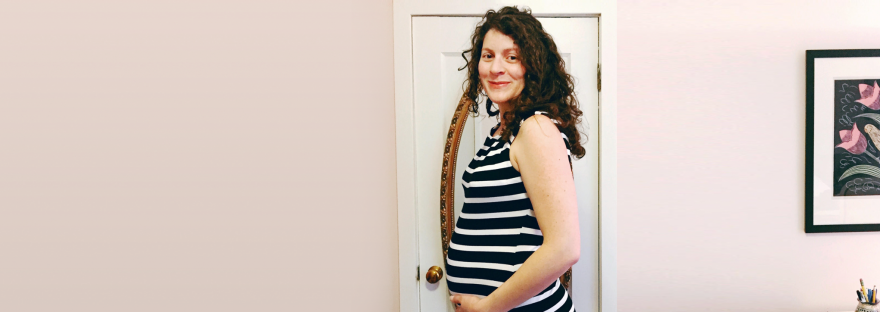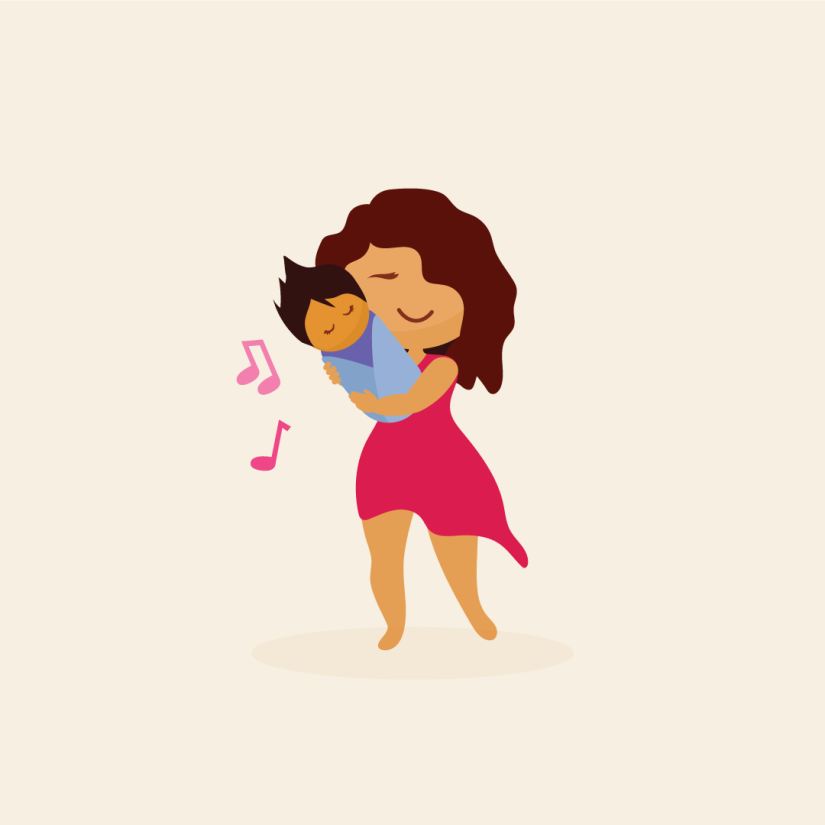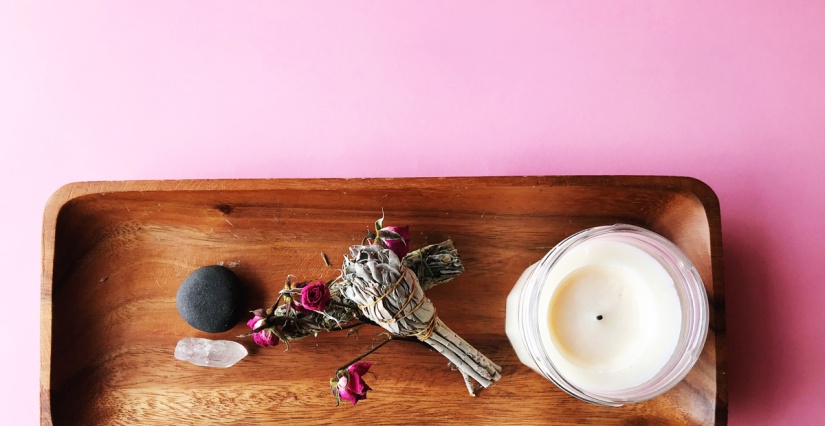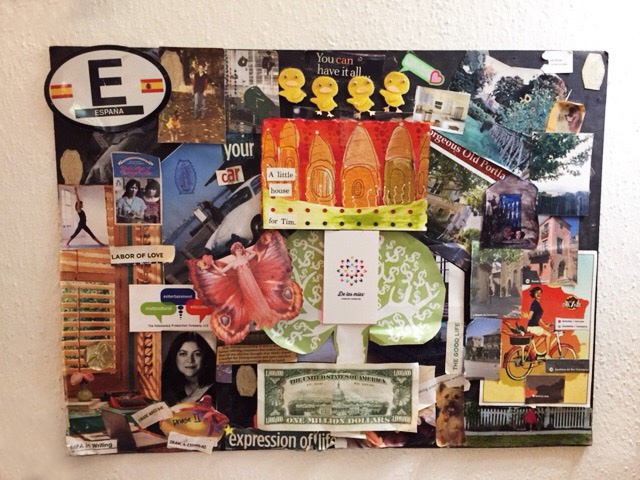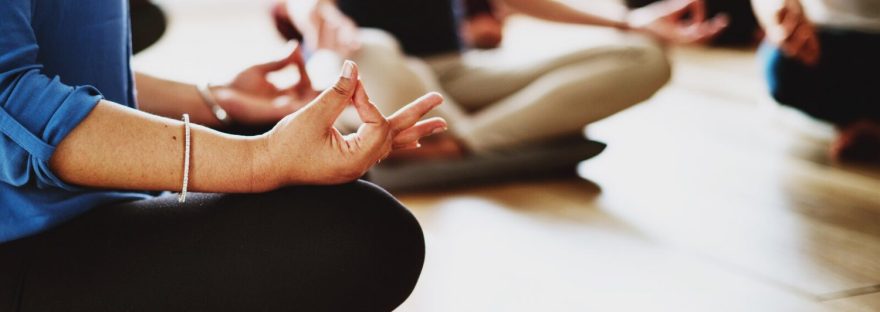
Tener un bebé es una experiencia sumamente emocional, con muchos altos, y para algunas de nosotras, unos bajones bastante fuertes. Algunas dirían que es hasta estresante. Con todas esas hormonas que invaden nuestro cuerpo, a veces podemos llegar a sentir que no tenemos mucho control de nuestras emociones.
A principios de año nació mi hija. Es la primera, y como muchas mamás primerizas, pensé que sabía lo que me esperaba. Leí todos los blogs y libros y escuché todo tipo de podcasts, pero para lo único que no estaba preparada era para la montaña rusa de emociones. Es decir, no esperaba sentir los baby blues.
Inmediatamente después del parto empecé a sentir altibajos emocionales muy fuertes, estando en un momento furiosa y al siguiente en una apatía total. Somos muy chillones en mi familia. Además, yo soy de la idea de que es necesario echarse una buena lagrimeada de vez en cuando. Pero una semana después de la llegada de la bebé, lloraba todos los días. Estaba extremadamente abrumada y sentía grandes cambios emocionales: iba de 0 (normal) a 10 (ira/llanto) en cuestión de segundos. En medio de la noche, me preguntaba por qué la gente quería tener bebés, y me juraba a mí misma que no volvería a tener otro. Cuando llegó mi mamá con una olla de albóndigas y no me emocioné, supe que algo estaba mal.
Eso no era normal en mí. Sin embargo, a 80% de las mujeres les dan los baby blues y hasta 20% sufren de depresión posparto. (Los baby blues son sentir melancolía o tristeza por unas cuantas
semanas después de dar a luz, pero a veces puede ser depresión actual – a esta
condición se le llama depresión posparto. Es importante reconocer la
diferencia.)
Mi esposo lo describió como si me hubieran apagado las luces. El me ve como una mujer fuerte y centrada, que ha sabido sobrellevar las olas de la vida. Soy una persona fuerte y me adapto bien a los cambios de la vida. Pero en esas primeras semanas después del nacimiento de mi hija, no supe cómo lograr el equilibrio. No me reconocía.
Fue mi esposo quien me animó a buscar a mis amigas y compartirles cómo me sentía. Me alentó a llamar a mis amigas con hijos para hablar con alguien que entendería por lo que estaba pasando. Y eso me ayudó, pero ante la enorme magnitud que es la maternidad, me sentí completamente abrumada. No tardó mucho en sugerir que buscara ayuda y hablara con una terapeuta.
Encontré a una consejera familiar certificada y especializada en la transición a la maternidad. Mi primera sesión fue a las 5 semanas de haber parido y fue una liberación absoluta. Le compartí lo que estaba sintiendo, todas las emociones y las frustraciones, la culpa, la sensación de estar completamente abrumada. Al terminar la hora, sentí que me había quitado un gran peso de encima.
No se trató únicamente de hablar de mis sentimientos y experiencia lo que me ayudó. Me dio información específica y útil que me ayudó a entender por lo que estaba pasando. Me dijo que hay tres causas principales de los baby blues, aparte de los cambios hormonales y químicos:
- La privación del sueño
- La falta de actividad física
- El aislamiento social
Me dijo que si lograba abordar estas causas, me ayudaría considerablemente a manejar mis baby blues.
Privación de sueño
Esto es complicado para la mayoría de los padres. Algunos tienen la suerte de que les toquen bebés que duermen todo el tiempo. Para el resto de nosotros, son 20 minutos aquí y allá, y estar despiertos cada hora y media en la noche para comer. En general, los humanos necesitamos por lo menos 5 horas de sueño corrido para estar en forma. Y para la mayoría de las mamás primerizas, eso no pasa. El consejo común es dormir cuando duerme el bebé, lo cual es genial en teoría, pero en la práctica para mí fue casi imposible. Basta con decir que no hubo mucho que pude hacer al principio con respecto al sueño.
Falta de actividad física
Me hicieron cesárea así que no pude moverme mucho. Además, tuve un recién nacido cuando hacía frío afuera, y estaba súper nerviosa por los gérmenes las primeras 8 semanas. No fue hasta dos semanas después del parto que las matronas me dieron luz verde para sacar a los perros a caminar dos cuadras. Normalmente saco a los perros dos veces al día por 30 minutos, ¡así que mi primera caminata posparto por la cuadra estuvo increíble! No me importó que estuviera lloviendo. ¡Estaba afuera, en el mundo! Y esa pequeña caminata me animó muchísimo ese día.
A las 6 semanas posparto, me dieron de alta para volver a bailar y ¡ese fue un punto de inflexión! Me medí en mi primera clase. No bailé con todo. Pero esa hora de estar en mi cuerpo, me hizo volver a ser yo misma. Poco a poco volvimos a los paseos con los perros e iba a bailar cuando podía. Tomé una clase de yoga posparto increíble que me enseñó cómo endurecer mi centro y fortalecer el suelo pélvico.
Aislamiento Social
Esto fue lo más difícil para mí. Soy una persona sumamente social. No me di cuenta lo aislante que es tener un recién nacido. Mucha gente no sabía si o cuándo estaba bien buscarme o pasar a visitar. Pensaban que estaba muy ocupada o que no quería compañía. No podían estar más equivocados. Necesitaba tener gente a mi alrededor. Necesitaba hablar con amigos; saber qué pasaba fuera de mi casa.
Me di cuenta que necesitaba tomar las riendas. Busqué a mis amigas y les pedí que me acompañaran en mis paseos o que nos viéramos para tomar un café. Les decía que no me molestaba en lo absoluto que me textearan o llamaran de manera espontánea.
También les compartí a mis amigas lo que viví con los baby blues. Les dije que necesitaba su apoyo y lo que podían hacer para ayudarme.

Ahora que mi hija es más grande, duerme 6 horas cada noche; ¡nunca me imaginé lo emocionada que me haría dormir 5 horas corriditas! Regresé a mis clases de baile y empiezo a sentir que recupero mi fuerza, pero ha sido difícil. Todavía no vuelvo a ser la misma de antes de embarazarme, y está bien. Decidí ser generosa conmigo misma. Tal vez me tome un año o un poco más para que me vuelva a sentir igual de fuerte, flexible y tener la resistencia física que tenía antes del embarazo. El aislamiento social es algo que todavía tengo que superar. Somos los primeros de nuestro círculo de amigos en tener un hijo, así que todos estamos tratando de entender lo que significa. Y me di cuenta que tengo que cuidarme y pedir lo que necesito, por lo cual debo de ser más proactiva y juntarme con mis amigos.
Espero que mi experiencia ayude a otras mamás. Es importante cuidarnos para poder ser mejores madres. Y es importante ser generosas con nosotras mismas. He aprendido a no ser tan dura conmigo misma, a fomentar la aceptación, ser más paciente, encontrarle el lado chistoso al asunto y pedir ayuda cuando la necesito.
NOTA: Si crees que padeces de baby blues o depresión posparto, habla con tu doctor. Este blog simplemente sirve para concientizarnos y compartir lo que me funcionó en mi situación específica. Cada situación es diferente. Habla con tu doctor y él/ella te puede proporcionar los recursos para ayudarte.





